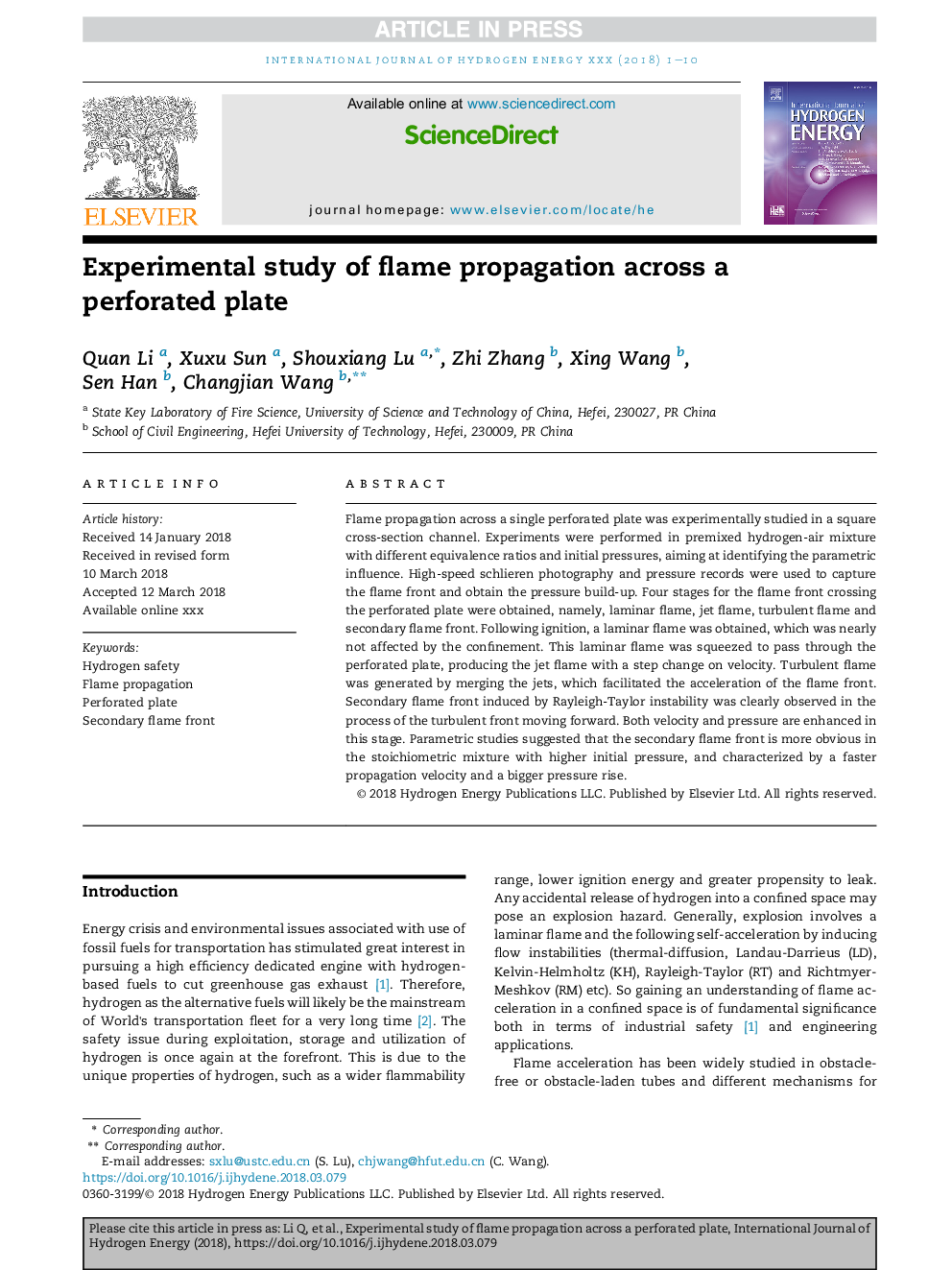| Article ID | Journal | Published Year | Pages | File Type |
|---|---|---|---|---|
| 7706325 | International Journal of Hydrogen Energy | 2018 | 10 Pages |
Abstract
Flame propagation across a single perforated plate was experimentally studied in a square cross-section channel. Experiments were performed in premixed hydrogen-air mixture with different equivalence ratios and initial pressures, aiming at identifying the parametric influence. High-speed schlieren photography and pressure records were used to capture the flame front and obtain the pressure build-up. Four stages for the flame front crossing the perforated plate were obtained, namely, laminar flame, jet flame, turbulent flame and secondary flame front. Following ignition, a laminar flame was obtained, which was nearly not affected by the confinement. This laminar flame was squeezed to pass through the perforated plate, producing the jet flame with a step change on velocity. Turbulent flame was generated by merging the jets, which facilitated the acceleration of the flame front. Secondary flame front induced by Rayleigh-Taylor instability was clearly observed in the process of the turbulent front moving forward. Both velocity and pressure are enhanced in this stage. Parametric studies suggested that the secondary flame front is more obvious in the stoichiometric mixture with higher initial pressure, and characterized by a faster propagation velocity and a bigger pressure rise.
Related Topics
Physical Sciences and Engineering
Chemistry
Electrochemistry
Authors
Quan Li, Xuxu Sun, Shouxiang Lu, Zhi Zhang, Xing Wang, Sen Han, Changjian Wang,
